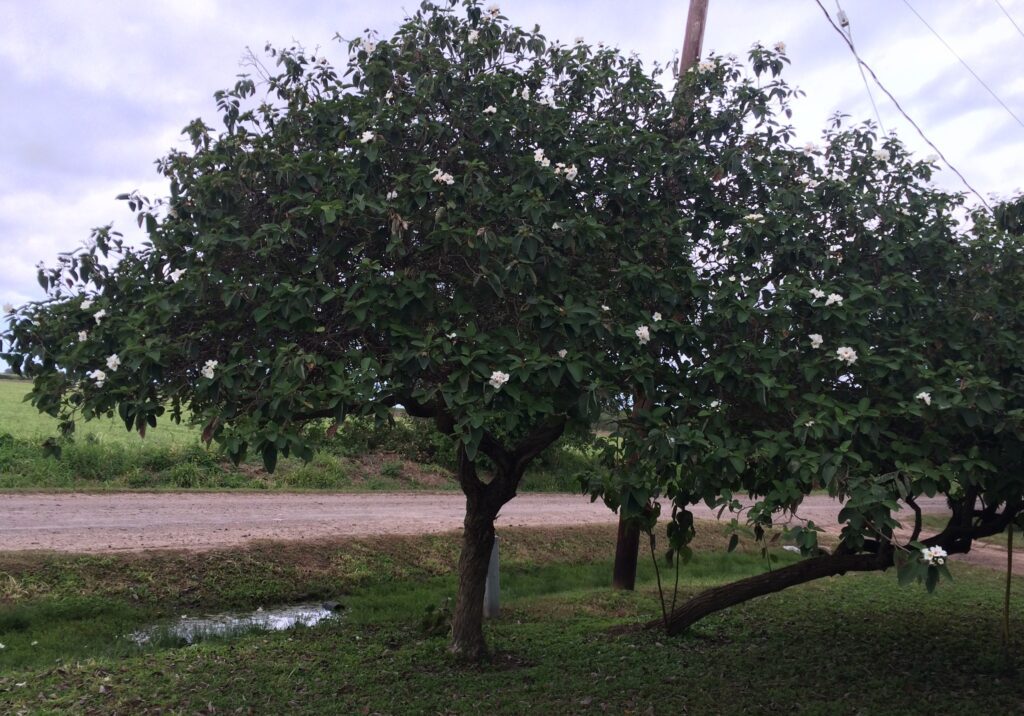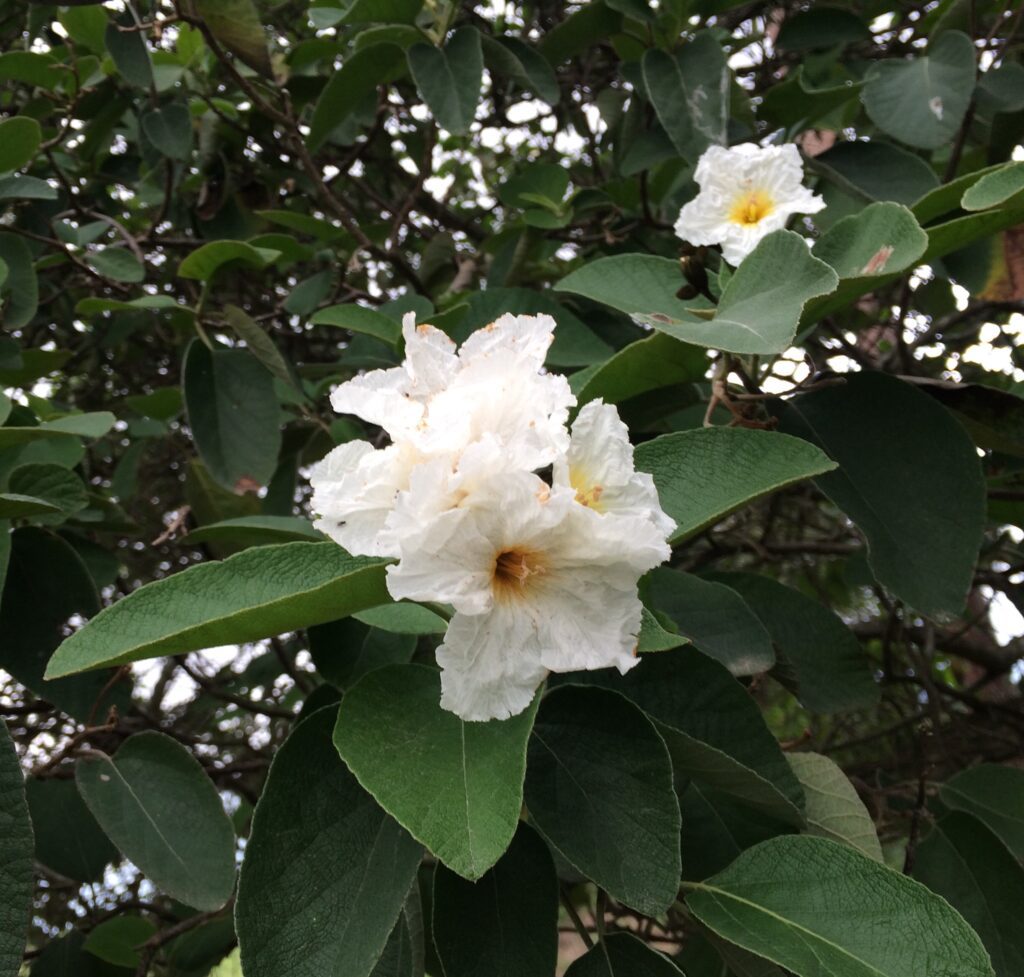Sunday was the perfect day to spend outdoors – cool and sunny. After burning the branches already in the fire pit, we wandered through the yard trimming dead wood to keep the fire going. It gave us a chance to take a good look at our trees – how they’ve grown, what looks good, and what we need to help along.
We came away from this home tree survey, head over heals in love with our Wild Olives (Cordia boisierri).

It’s almost December and we are still getting flowers. They aren’t as big and there aren’t as many as in the warm months, but we have flowers! The flower is a very delicate yellow throated, trumpet shaped white blossom.

Back to the tree – it is a small tree, rarely growing taller than 15′ and is usually wider than it is tall. The trunk has deeply grooved bark and never grows straight up. It’s quite the wanderer. . . Here in the Rio Grande Valley, Wild Olive is also known as Anacahuita, which is a fun word to say. Try it . . . an – a – ca – hui – ta. I would always call this tree Anacahuita if everyone would know what I was talking about. It just rolls off the tongue.
These flowers become olives, which can be on the messy side if you have planted your Wild Olive over a sidewalk or driveway. Plant it with grass or ground cover below. The white flowers drop every day and look quite lovely on top of green grass or groundcover.
Wild Olive is a south Texas native. After it is established, its very drought tolerant. In fact, this tree reacts poorly to too much water. Plant it in a well-drained spot. It is evergreen and is cold-hardy through San Antonio. For more information, double click Wild Olive for our info sheet.
